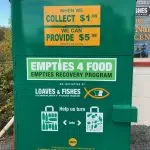
Contaminated recyclables down in Nanaimo, while items going to the landfill remain high
NANAIMO — A concerted effort to educate locals about what can be recycled has been successful in Nanaimo, but there are still far too many items ending up in the landfill.
In 2021, Recycle BC told the City of Nanaimo their levels of improperly recycled materials in the blue bins were too high, with the City then launching a campaign to educate locals about correct recycling habits.
Acting sanitation manager Dave Thompson said those efforts have been mostly successful, running for the last two years from May until the end of August.
“A plan that included education, curb-side inspections and a number of other programs to try and get that contamination rate back down to where we wanted it to be. In 2023, our efforts were successful to the point where Recycle BC actually notified us that our remediation plan was no longer required. We didn’t quite hit the target levels but we were very close.”


